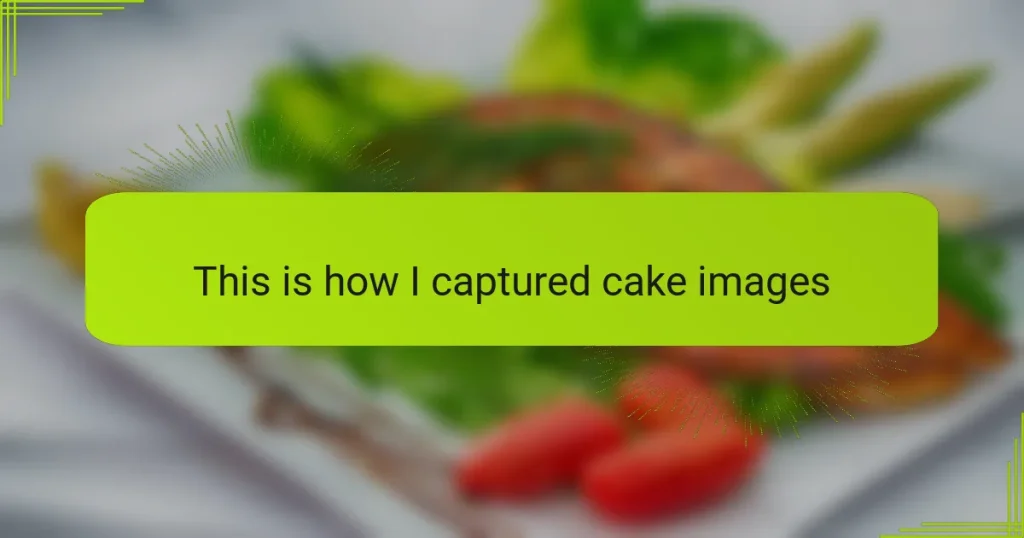Key takeaways
- Good lighting, particularly natural light, is essential for capturing the textures and details of desserts effectively.
- Steady camera setup, such as using a tripod, is crucial for avoiding blurriness and ensuring clear images.
- Styling and props enhance the narrative of the dessert, making the photo more inviting and appealing.
- Experimenting with camera settings like ISO and aperture can significantly improve the clarity and focus of cake images.
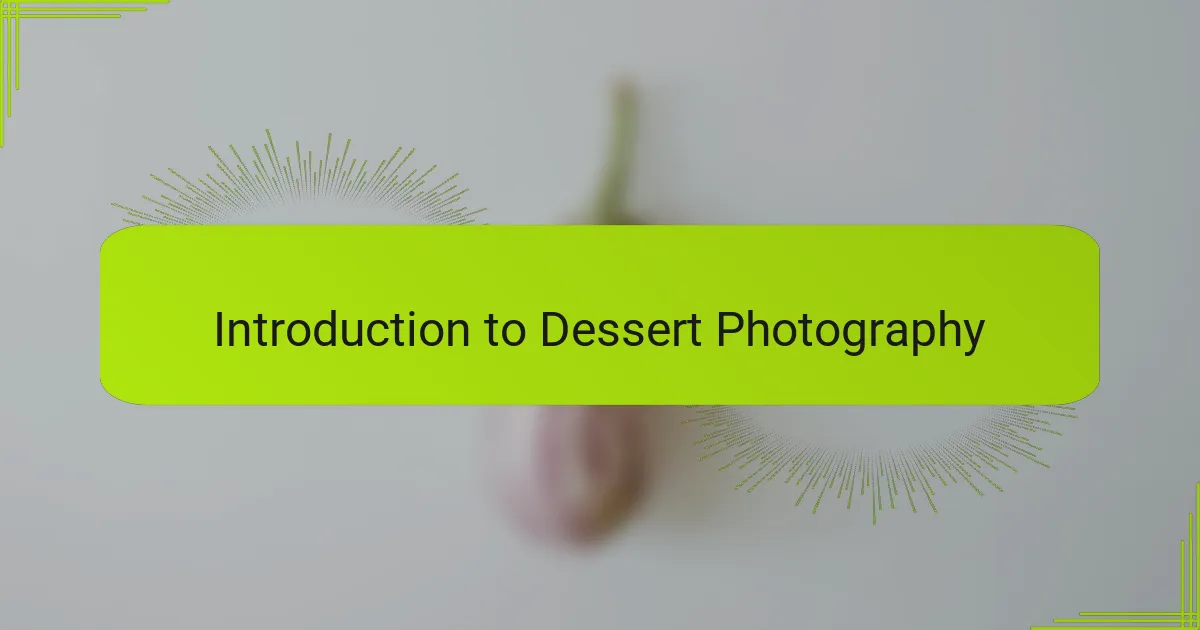
Introduction to Dessert Photography
Dessert photography feels like capturing a fleeting moment of joy on a plate. Have you ever noticed how a perfectly snapped cake photo can make your mouth water before you even taste it? I’ve found that beyond technical skills, it’s about conveying the warmth and anticipation that desserts evoke.
When I started photographing cakes, it was more than just about the camera settings—it was about telling a story. The soft lighting that highlights the texture of frosting or the delicate crumbs can transform a simple photo into an invitation to indulge. Don’t you think that when you look at a dessert image, you should almost smell its sweetness?
I remember my first successful cake shot; it was such a rewarding moment because it connected my passion for baking with my love for storytelling through images. Dessert photography isn’t just about food—it’s about emotion, memory, and creating a visual craving that invites others to share in the experience.
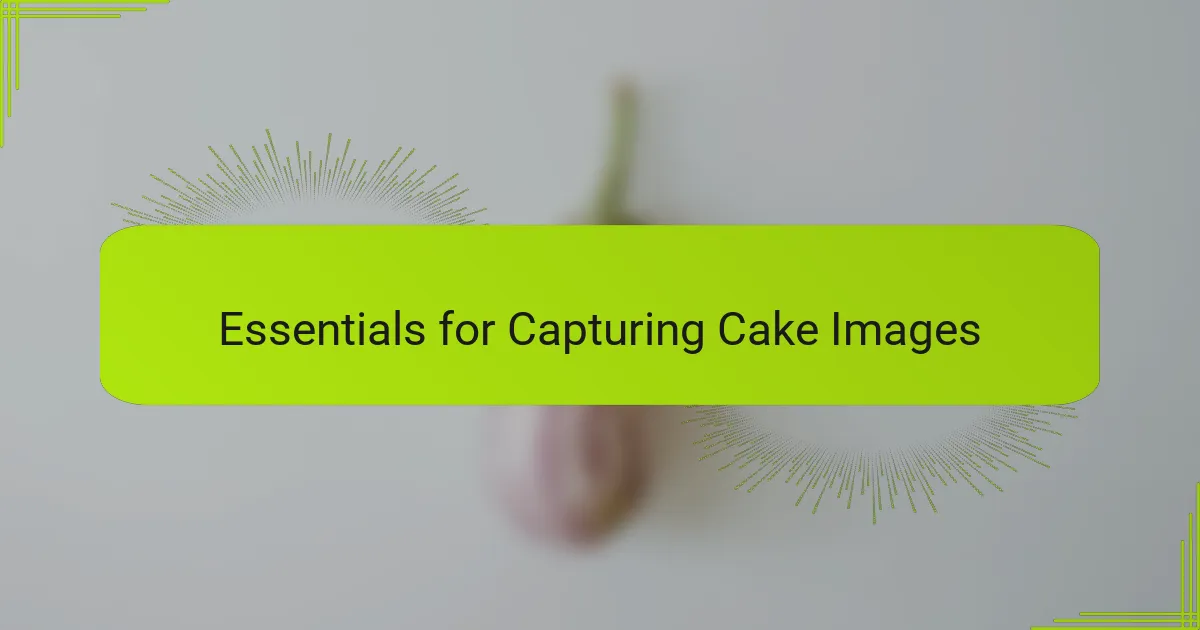
Essentials for Capturing Cake Images
When I first began capturing cake images, I quickly realized that good lighting was non-negotiable. Natural, soft light works wonders to bring out the frosting’s creamy texture without harsh shadows stealing the show. Have you ever noticed how the right light can almost make the cake seem alive on your screen?
A steady camera setup has been my silent helper night after night. Whether it’s a tripod or simply propping my phone steadily, avoiding blur ensures every sprinkle and swirl is crisp and inviting. It’s those little details that make a cake image irresistible, don’t you agree?
Background and props also play a subtle yet powerful role. I tend to choose simple, uncluttered settings that let the cake shine, but adding a touch of rustic charm with a linen cloth or a vintage plate often brings warmth and context to the shot. Finding that balance feels like crafting the perfect recipe—each element supporting, never overpowering.
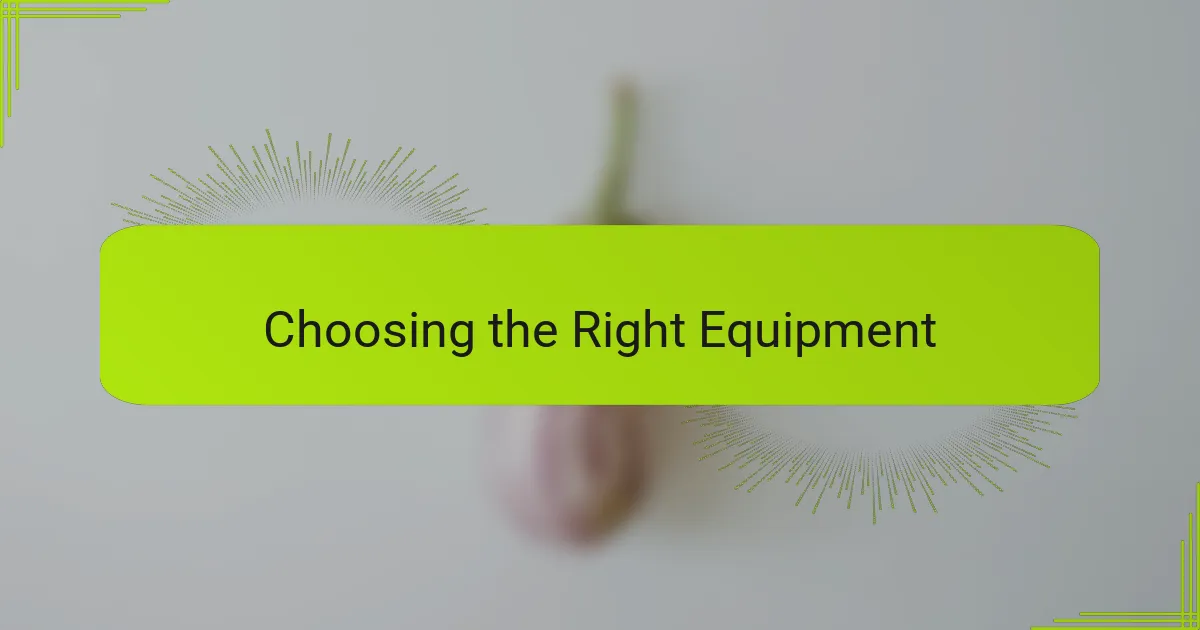
Choosing the Right Equipment
Choosing the right equipment felt like stepping into a new world for me. I quickly learned that a good camera matters, but it doesn’t have to be the most expensive one. In fact, I started with my smartphone, and with a few adjustments, the images were surprisingly delicious-looking. Have you ever been amazed at how much your phone can do with the right lens or settings?
Tripods became my best friends early on, especially during low-light shoots. Stability transforms a shaky, blurry photo into something crisp that practically invites you to take a bite. I can’t tell you how many shots were saved just by investing in a solid tripod—it truly made me feel like a pro.
Choosing lenses was another eye-opener. A macro lens helped me capture the tiny sugar crystals and delicate frosting swirls in a way that made the cake’s texture jump off the screen. When you can see those details up close, doesn’t it feel like you’re right there, savoring every bite? That’s the magic I chase every time I shoot.
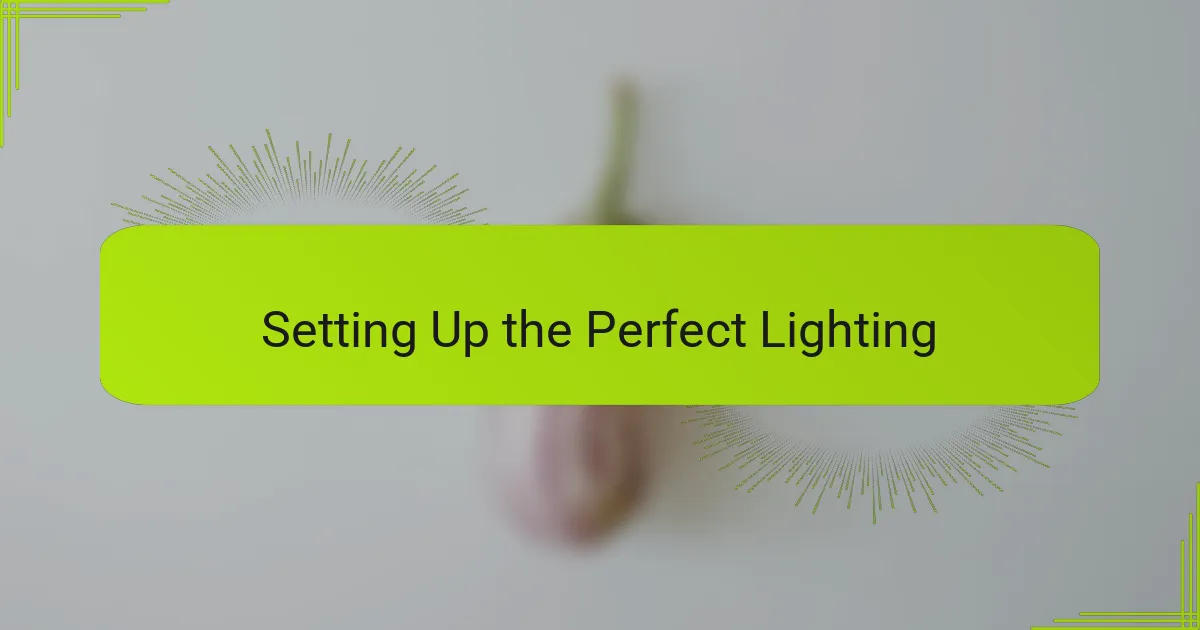
Setting Up the Perfect Lighting
Lighting can make or break a cake photo, and my biggest lesson was learning to work with natural light. I found that shooting near a window in the early morning or late afternoon bathes the cake in a gentle glow that brings out every luscious detail without harsh shadows. Have you ever noticed how a sunlit cake seems almost too good to eat?
Sometimes, I set up a simple white reflector—like a piece of foam board—to bounce light back onto the darker sides of the cake. This little trick softens shadows and adds depth without overwhelming the scene. It’s fascinating how something so basic can elevate the whole image, don’t you think?
At one point, I tried using artificial lights, but they often felt too cold or created unwanted glare. Sticking to soft, diffused lighting feels more natural and inviting, much like the warm feeling you get from slicing into a fresh cake. Lighting isn’t just about visibility; it’s about mood, and that’s what I aim to capture every time.
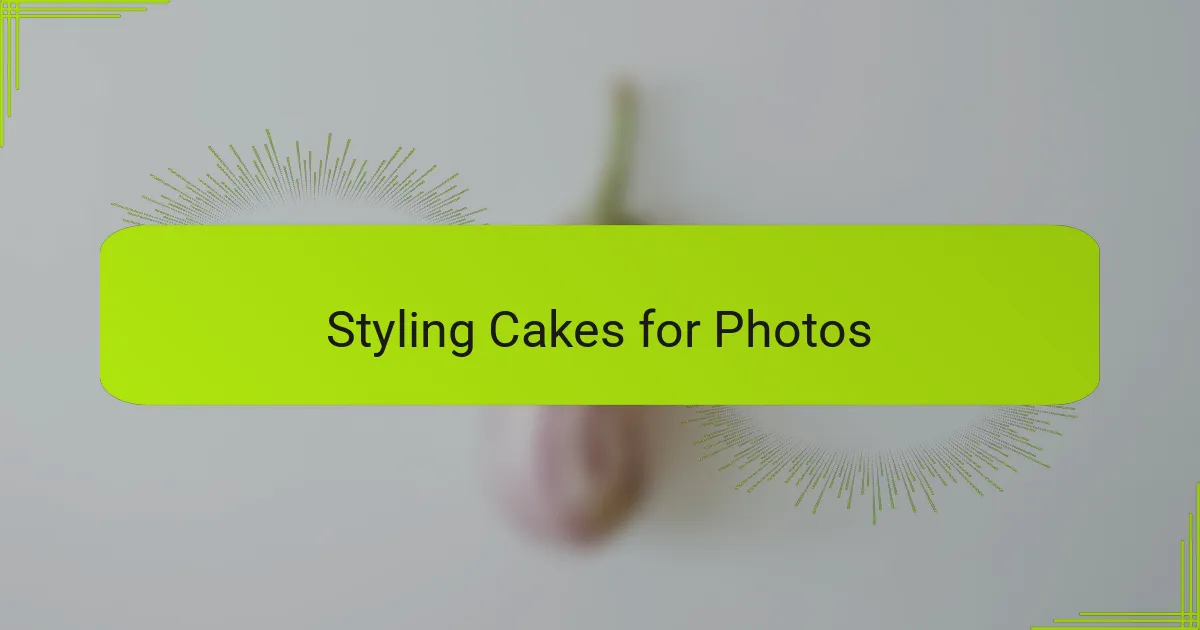
Styling Cakes for Photos
Styling cakes for photos is where creativity really takes center stage. I often find myself adjusting tiny elements—like repositioning a stray crumb or adding a fresh berry—because these small touches can transform a good shot into a captivating one. Have you ever noticed how a simple sprinkle of powdered sugar or a glossy glaze can make a cake look irresistibly fresh?
One trick I’ve learned is to think about the cake’s story before styling it. For example, if it’s a rustic carrot cake, I might surround it with natural props like a wooden board or some loosely scattered nuts to echo its homemade charm. This storytelling through styling adds a deeper layer to the image, making viewers almost able to taste the cake’s personality.
Sometimes, I get carried away arranging layers or draping a delicate cloth just right—there’s an almost meditative quality to it. It’s funny how I end up spending as much time styling as snapping the photo, but that patience always pays off when the final image evokes that mouth-watering moment I want to share. Have you tried styling your cakes with this kind of mindful attention? It really changes everything.
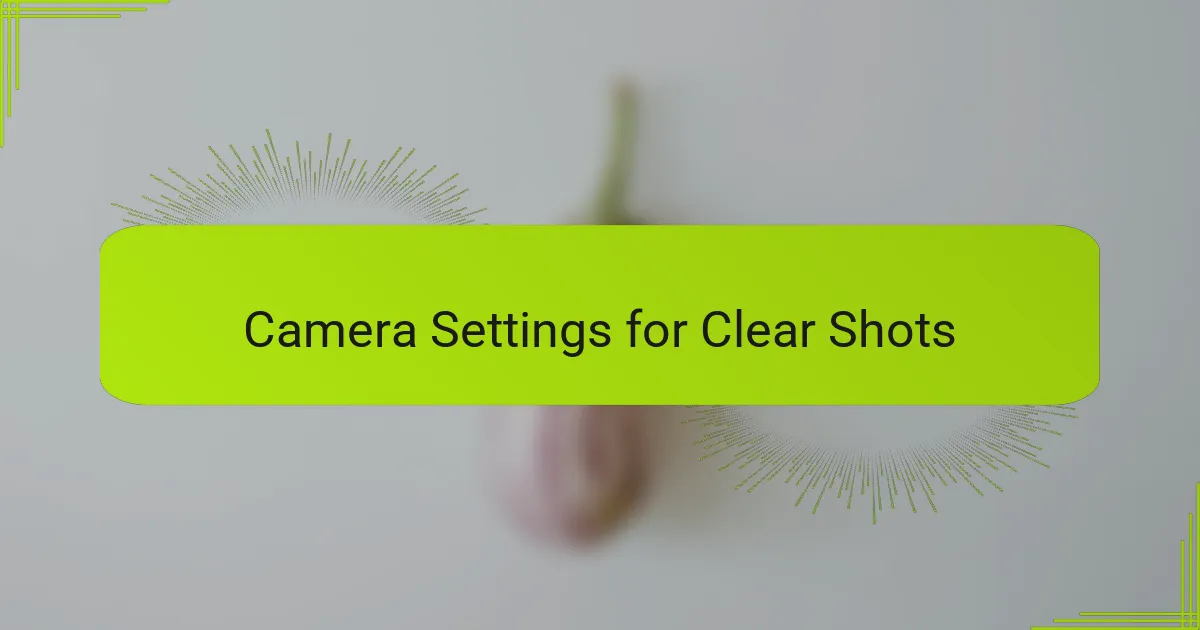
Camera Settings for Clear Shots
Getting the camera settings right was a game-changer for me. I learned early on that using a low ISO, around 100 to 200, keeps the image crisp and free from graininess, especially in well-lit environments. Have you ever tried shooting with a high ISO only to find your photo looks noisy and soft? That was a mistake I quickly avoided once I understood its impact on clarity.
Aperture settings became my trusty tool for directing focus. I usually set the aperture between f/2.8 and f/5.6 to achieve that lovely shallow depth of field that blurs the background while keeping the cake’s details sharp. It feels magical how adjusting just this one setting can make the frosting’s texture pop and isolate the cake from distractions. Don’t you love when the subject really stands out on its own?
Shutter speed is another crucial aspect that taught me patience. Since I work mostly with natural light, I keep it slow enough to let in enough light, often around 1/60th of a second, but never so slow that I risk blur. Using a tripod here saves my shots and sanity. Have you experienced the frustration of a beautiful setup ruined by a slight camera shake? Trust me, these settings protect your efforts and bring that coveted clarity to every shot.

Personal Tips for Better Cake Images
One personal tip I always follow is to shoot from different angles before settling on the final shot. Sometimes the magic happens when you capture the cake from slightly above or just at eye level. Have you ever been surprised by how a simple shift in perspective can completely change the mood of your photo? It’s like discovering a secret view that really showcases the cake’s best features.
I’ve also learned to be patient and give myself time to tweak small details during the shoot—whether it’s adjusting the cake’s position, smoothing out frosting edges, or waiting for the perfect natural light to spill in. It might sound tedious, but those moments of careful adjustment often turn a good image into a truly inviting one. Don’t you think that attentiveness is the key to making a cake photo that feels warm and irresistible?
Lastly, I can’t stress enough the importance of experimenting with props and backgrounds that complement the cake’s story without stealing the spotlight. One time, adding a simple vintage fork and a sprig of mint made a vanilla sponge come alive in the photo, giving it a fresh, approachable vibe. Have you tried storytelling through styling? It’s amazing how these little touches can turn a still image into a warm invitation to taste.
